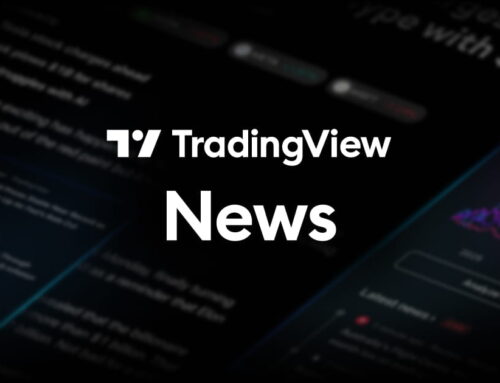“It’s not new”: Why the D&O pricing environment is just cyclical amnesia
May 15, 2025
D&O is cheap again – and that’s exactly what worries Michael Densham

Falling premiums may look like a win for buyers, but for Michael Densham, president of Banyan Risk Services Ltd., they signal a dangerous forgetfulness in the market.
Densham isn’t convinced directors’ and officers’ liability is undergoing radical change. What others label unprecedented, he sees as the latest turn in a familiar cycle. IPOs are down, M&A is sluggish, and premiums are falling even as claims grow more severe. But the deeper issue, he argued, is the tendency to treat each shift as unique – resetting pricing assumptions with every new event.
“There’s a novel source of claim every year or two that replaces the old one,” Densham said. “It’s not new – it’s the nature of D&O.”
Banyan, which focuses on non-standard placements, leans on underwriting data and long-view modeling to price risk without reacting to headlines. But Densham is more concerned with how internal incentives distort behaviour – from the return of “limit factor” games to the erosion of catastrophe buffers.
“Implied margins are below where they need to be – and that’s happening on a growing number of files,” he said.
With the buyer pool contracting and competition intensifying, Densham warned that instability could speed up a correction. His advice to brokers: partner with markets that can explain their pricing – and stay committed when the cycle turns.
Market overview: Familiar patterns, new pressures
Canada’s D&O market is in a pronounced soft phase. IPO activity has slowed, mergers and acquisitions are down, bankruptcies are up, and the pool of insurance buyers is shrinking. Despite these headwinds, some insurers are aggressively reducing premiums and increasing capacity, even as the severity of claims continues to rise.
“This behavior is a symptom of the industry’s tendency to forget hard-learned lessons and treat every cycle as unique,” Densham said.
He likened the current environment to a fast-tracked rerun of the 2005 to 2018 market cycle that led to the hard market of 2019–2021.
“This softening is much more rapid and steep than that earlier period,” he said. “Markets that don’t get swept up in short-term behaviours will be better positioned when the cycle inevitably turns.”
Misaligned incentives and eroded margins
Densham said he was concerned with how internal incentives drive short-term behaviours at the expense of long-term portfolio resilience. He pointed to the shrinking of increased limit factors (ILFs), the re-underwriting of risks as “new” business to chase growth, and carriers raising limits just to grow premium.
These practices lead to the erosion of implied margins and the breakdown of portfolio stability.
“Pricing is getting to a point where the cat load is eroded,” he said. “That cycle of chasing deals without a firm pricing foundation is eating away at essential risk buffers.”
He urged brokers to work with markets that can articulate how they build pricing and why it’s sustainable.
“If a market can’t explain how they price their business, how can they build a resilient portfolio?” he said.
A measured approach in a reactive market
That data-led conviction allows Banyan to lean strategically into risk while others retreat. But Densham was quick to clarify – it’s not a gamble; it’s a disciplined strategy rooted in pricing clarity and rational modeling.
“When other carriers run for the exits, we walk toward the entrance,” he said. “But we know what we’re walking into given the data modelling we undertake.”
Densham added that volatility in the D&O space isn’t driven by risk itself, but by the way insurers are rewarded internally. Metrics that reward growth without regard to portfolio health create behaviors that replicate pricing flaws—like applying ILFs uniformly without considering the absolute premium value per layer.
Canada’s D&O market is contracting—and speeding up
Based in Canada, Banyan is watching macroeconomic factors compound the problem. Fewer IPOs and a slowdown in M&A mean fewer buyers overall. When deals do happen, two buyers often become one insured. All this unfolds while rates are decreasing.
“You’ve got fewer buyers,” Densham said. “You’re not seeing new companies come to market. M&A reduces buyer count—and all that against the backdrop of decreasing prices. A smaller premium pool, supporting what is essentially the same exposure base.”
He sees this moment as a sped-up version of past softening phases, again referencing the 2005 to 2018 period that preceded the last hard market.
“The pace of change in the D&O pricing environment over the past few years is just staggering,” he said. “You have to wonder how long it can last, when it plateaus – and how quickly a correction might come.”
That’s why Banyan doesn’t just price differently – they act differently. Transparency is central to their strategy.
“We’re as open as possible about how we’re developing our premiums,” Densham said. “We won’t share the model’s secret sauce, but we explain the rationale.”
Underwriting that outlasts the news cycle
At Banyan, the goal isn’t to “win” every opportunity. It’s to build resilient placements and a resilient portfolio. Their data work lets them lean into some opportunities, but it also results in premiums well above market on others.
“That’s not a contradiction – it’s discipline,” Densham said.
In one recent case, Banyan came in significantly below the incumbent’s expiring premium – not because they were undercutting, but because they had tracked the account for three years and had a one-on-one discussion with the client.
“We couldn’t have priced the risk the way we did without direct access to the client,” he said. “The one-on-one discussion and transparency allowed us to structure the best option possible.”
He encouraged brokers to support underwriters who can write both non-standard and standard risks.
“If you’ve placed business in the non-standard space with an underwriting company, and that same underwriter has capabilities in the standard space, use them in both situations,” he said.
“Help those firms build a diversified portfolio to the benefit of all your clients when it comes time to pay a covered claim.”
Related Stories
Fetching comments…
LATEST NEWS
Search
RECENT PRESS RELEASES
Column: Virginia’s future growth depends on energy diversity
SWI Editorial Staff2025-12-13T20:14:09-08:00December 13, 2025|
Want to Start the New Investing Year Off Right? 3 Warren Buffett-Inspired Moves to Make Be
SWI Editorial Staff2025-12-13T19:23:38-08:00December 13, 2025|
Risk-loving Korean investors made to watch training video before trading
SWI Editorial Staff2025-12-13T19:23:06-08:00December 13, 2025|
Pinnapuram Integrated Renewable Energy Project transforms barren land into world’s largest
SWI Editorial Staff2025-12-13T18:20:39-08:00December 13, 2025|
Athena Bitcoin Highlights the Power of Decentralization as the World Reflects on Satoshi N
SWI Editorial Staff2025-12-13T18:19:37-08:00December 13, 2025|
Investing in Our Communities: Northern New Jersey Community Foundation presents Grant Awar
SWI Editorial Staff2025-12-13T18:09:12-08:00December 13, 2025|
Related Post








